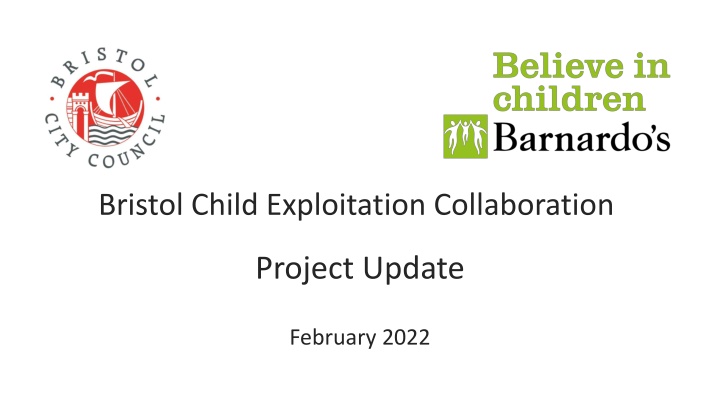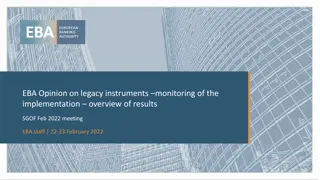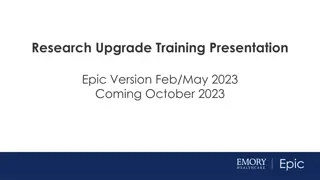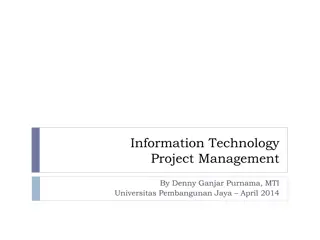
Bristol Child Exploitation Collaboration Project Update February 2022 Summary
Learn about the Bristol Child Exploitation Collaboration Project update for February 2022, including the project team, strategic objectives, project plan, literature review, stakeholder interviews, and hopes for the project. Discover the focus on developing a specialist services model for children affected by exploitation or youth violence in Bristol, with insights on successful interventions, stakeholder engagement, and future goals. Explore the holistic approach to support young people in moving forward and achieving better outcomes.
Download Presentation

Please find below an Image/Link to download the presentation.
The content on the website is provided AS IS for your information and personal use only. It may not be sold, licensed, or shared on other websites without obtaining consent from the author. If you encounter any issues during the download, it is possible that the publisher has removed the file from their server.
You are allowed to download the files provided on this website for personal or commercial use, subject to the condition that they are used lawfully. All files are the property of their respective owners.
The content on the website is provided AS IS for your information and personal use only. It may not be sold, licensed, or shared on other websites without obtaining consent from the author.
E N D
Presentation Transcript
Bristol Child Exploitation Collaboration Project Update February 2022
The Project Team Harriet Andrew Project Manager Emily Kay Researcher Olesya Myakonkaya Service Designer Duncan Stanway Barnardo s Chloe Feehan Peer Influencer Becky Lewis BCC Barnardo s Innovation Lab Suzanne Taylor Barnardo s Stakeholders Inc. Health, Police/OPCC, Youth Organisations
Strategic Objective Develop a specialist services model for children who have been exploited or effected by youth violence Research Question How can children and young people in Bristol who have experienced exploitation or youth violence be supported to move forwards and have better outcomes?
LiteratureReview The most successful interventions are holistic and include a combination of the following but there is no silver bullet: 1:1 support such as peer mentoring | Community based interventions | EET | Family support | Training school professionals |Providing opportunities such as football and music clubs | The quality of physical locations is key (e.g. green spaces, street lights etc) Peer to peer crimes are often overlooked Language that professionals use can be preventing them from building trust (victim blaming) Contextual safeguarding is a relatively new practice and sometimes professionals don t know how to translate into practical steps Police don t see YP engaging in group criminal activity as vulnerable and break trust easily Thresholds are too high - families call services multiple times but often don t feel heard Multi-agency approach is a must but needs more operational thought - how to collaborate in practice is not clear Interventions are overly focused on 1:1 support Services are split up but often the same child is a victim to various harms (often overlooking opportunities to intervene holistically)
Stakeholder Interviews Barnardo s Routes / Barnardo s BASE Learning Social Care East Central Operation Topaz Social Care South Partnership West Barnardo s Service Manager (Old Market Services) Senior Youth Workers (FIF & Safer Option) Centre of Expertise and CSA Pathway Safer Options OPCC University of Bedfordshire (Contextual Safeguarding) Education Inclusion Managers (FIF & Safer Option) YOT
FEARS FEARS for the project
Emerging themes Need more involvement of health professionals (both in terms of referral and providing interventions) Need a more collaborative approach between organisations (we are hearing about duplication, not knowing who is doing what, siloes - although there are examples of collaboration working particularly well on particular projects with a joint goal, e.g. Stapleton Road, Weapons in School Pathway) Lack of data sharing is one of the big obstacles to collaboration (although some good examples of it working well) Cross-agency collaboration is personality dependent (depends who you get in meetings) Over focusing on 1:1 support such as peer mentoring and social worker support as opposed to collaborative community interventions Lack of understanding how to turn contextual safeguarding into practical steps (varied) Lack of clarity on how to transition to adult services when YP reach 18
Continued.. Lack of EET opportunities for YP who were criminally exploited Difficult to identify harms that are on the horizon/overlook signs of harms that are about to happen (thresholds might be too high for referrals, families, schools etc might not know how to spot red flags ) Services focused on high risk (after harms had occurred) and early intervention - gap for those in the middle? Pressure on community mentors being a silver bullet but they are very stretched More skill sharing needed between statutory voluntary organisations Exploitation services split out into CCE vs. CSE, whereas needs for young people often overlap (some upskilling is being done to address this, e.g. Routes workers training in CSE, and Topaz recently expanded to include CCE) The importance of school inclusion is highlighted as a protective factor, it noted by social care that attendance is particularly poor in South Bristol.











